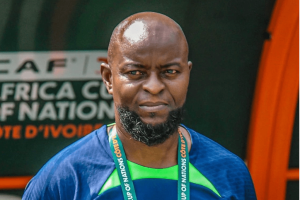Clubs in Major League Soccer are bound by salary caps but there is still a way to secure top-class talent; the Designated Player (DP) rule.
Each team is allowed three such players who can be paid over the salary cap in order to help attract star talent to MLS – both in the form of European veterans and rising stars from South America.
So, what is the DP rule, how did it come to be and who are the most memorable players to come to MLS as a result?
The DP rule was introduced back in 2007 and named after David Beckham, who became the league’s first Designated Player when he joined the LA Galaxy.
In short, the rule allows MLS teams to sign up to three players who will not be counted against the league’s salary cap through both wages and transfer fees. The thinking is this allows MLS clubs to be more competitive in the international transfer market.
MLS has worked under a salary cap since its inception back in 1996 in a bid to maintain a competitive balance among all teams and make the outcome of each season more unpredictable. In theory, no team can outspend another on the basis of simply having more funds available via a richer owner.
In 2022, Designated Players only counted for $612,500 against the salary cap. In reality, their wages can often be much more lucrative. According to the MLSPA’s 2022 figures, Toronto FC forward Lorenzo Insigne’s guaranteed compensation stands at $14m, making him the highest-paid player in the league by quite a distance – Xherdan Shaqiri is next on $8.2m.
Additionally, any player now entering MLS as a DP under the age of 23 will carry the following Young Designated Player salary budget charge:
The Young DP rule is just another way in which MLS clubs are finding more flexibility in the market.
As it stands, the salary cap will be set at $5.2m per team heading into the 2023 season, with clubs allowed to spend an additional $1.9m in General Allocation Money (GAM) and $2.7m in Targeted Allocation Money (TAM), as well as those aforementioned DP spots.
Slots 21-28 on a team’s roster are classed as ‘Supplemental’ and can include Homegrowns, Generation Adidas players and minimum-salary players. Generally, these slots are given to rising stars out of a team’s academy or players who will act as depth to cover for injuries and international call-ups.
There are growing voices calling for the relaxation or complete abolition of the salary cap, or at least for teams to be given extra DP spots to become more competitive regionally and globally.
Given the rule was named after him, David Beckham is obviously the most famous DP MLS has ever seen. But since his arrival in LA in 2007, the league has gone from strength to strength.
Over the years, he’s been followed stateside by a number of veterans who enjoyed sustained success in Europe. Wayne Rooney, Zlatan Ibrahimovic, Kaka, Steven Gerrard, Andrea Pirlo, Frank Lampard, David Villa and Thierry Henry have all played out in the states.
There is still room in MLS for these veteran players and indeed, right now, you can find the likes of Carlos Vela and Chicharito enjoyed sustained success.
But nowadays, those precious DP spots are often saved for rising stars from South America. Over the past few years, the likes of Miguel Almiron and Diego Rossi have gone on to enjoy success in Europe following productive stints in MLS.
Right now, World Cup-winner Thiago Almada (Atlanta United), Alan Velasco (FC Dallas), Facundo Torres (Orlando City) and Talles Magno (NYCFC) are among those looking to follow in their footsteps.
Additionally, the DP rule can often allow teams to sign players closer to or in their prime years looking for a second chance. Current examples include Federico Bernardeschi (Toronto FC), Emanuel Reynoso (Minnesota United) and Cucho Hernandez (Columbus Crew).























Add Comment